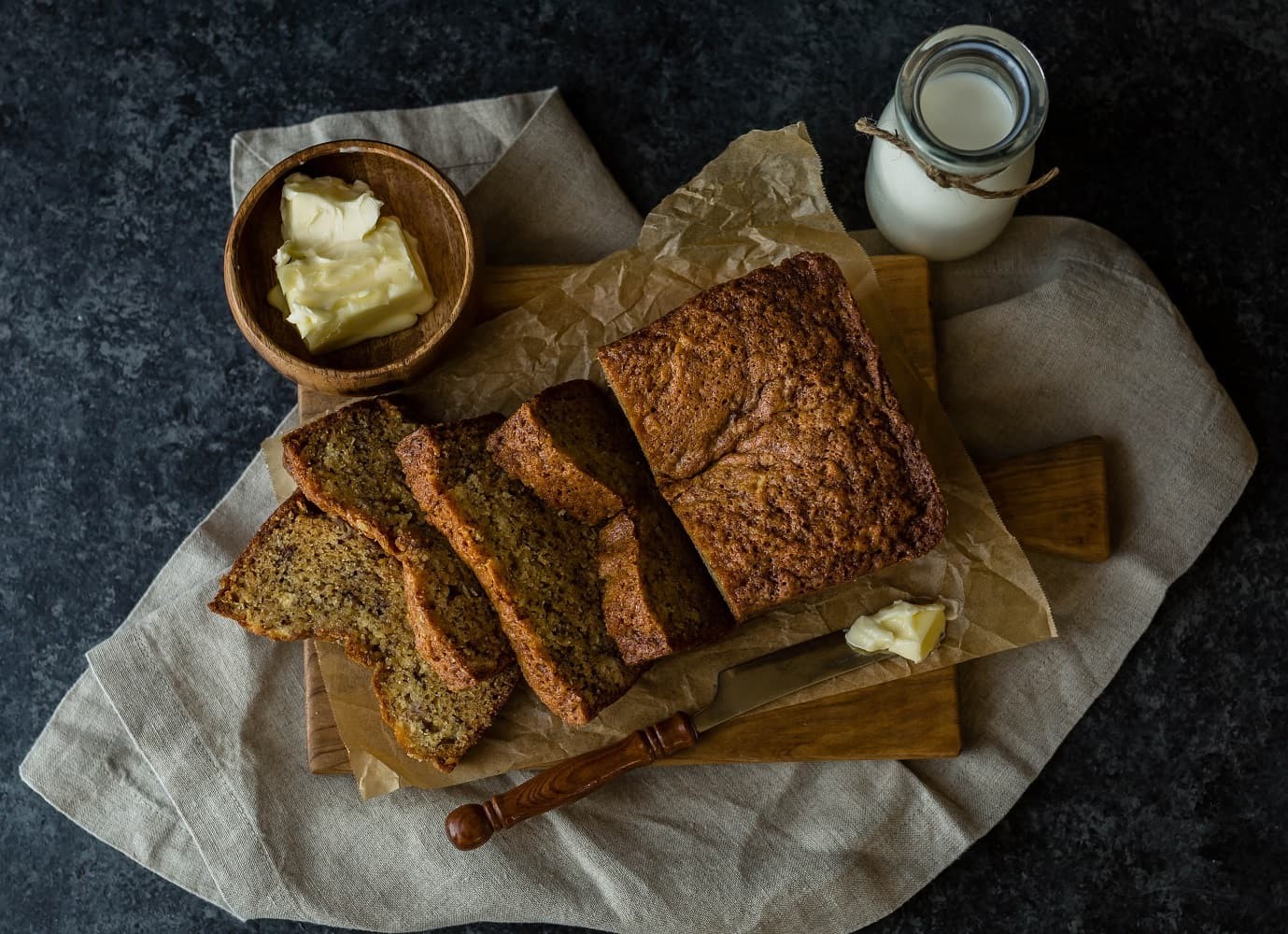
There is something soothing and comforting about banana bread. And this easy recipe can be enjoyed by those with gluten intolerance and those with celiac without compromising on taste and deliciousness. Banana bread is yummy on its own or topped with ricotta and honey.
Bananas are a great source of energy that will surely keep you going all day. Ripe bananas are also an excellent source of potassium, which helps keep your nerves and muscles in good condition. They have been proven to lower blood pressure and cholesterol levels. It also reduces the risk of cancer, promotes healthy bones, boosts the immune system, aids in weight loss, nourishes skin, lubricates joints and speeds up metabolism.
Adding the fresh fruit to bread and cake recipes, or even smoothies, retains moisture in the baked goods and renders a natural sweetness to them. When using a medium banana for your banana bread, you will only need a small amount of brown sugar because the fruit is naturally sweet, with 12 to 15 grams of natural sugar content. Besides its sweet taste and health benefits, the yellow fruit has a colourful history as a baking component, as you will discover soon.
History of Banana Bread
The history of banana bread dates back to 17th century England where British bakers would use yeasts to ferment bread dough before baking it, yielding bread with a unique flavour.
During the Victorian era of the 19th century, banana imports became increasingly popular in Europe after ships were able to preserve bananas during long voyages. As Europeans began eating bananas on a regular basis, they started using them as an ingredient for baking breads and desserts, including cakes and crumbles. Europeans enjoyed banana bread so much that it soon made its way over the Atlantic Ocean to America.
Banana bread history saw another surge in popularity when American soldiers fighting in World War II discovered how delicious it was while stationed overseas. The history of the flavoursome loaf was forever changed when they returned home and made it a staple in American kitchens.
Benefits of Eating Gluten-free
Gluten-free diets have had their share of controversy. But there truly is something great about not consuming gluten, and here they are:
- Helps improve cholesterol levels
- Promotes healthy digestion
- Boosts energy
- Helps minimise consumption of unhealthy and processed foods
- Promotes healthier food like fruits and vegetables
- Helps reduce risk of heart disease, certain cancers and diabetes
- Promotes better resistant to illnesses and diseases
- Perfect for weight loss
- Helps with irritable bowel syndrome and arthritis
How to Make Gluten-free Banana Bread
This gluten-free banana bread recipe combines the benefits of bananas and a gluten-free diet. It's easy to make and you can enjoy the fruits of your labour guilt-free.
For more delicious and healthy recipes, check out our recipe section.
Ingredients
- 1 1/2 cups gluten-free flour. You can also use oat flour if you are not a celiac and can tolerate oats.
- 1 cup desiccated coconut
- 1/2 cup brown sugar or maple syrup
- 2 tsp gluten-free baking powder
- 1/2 teaspoon bicarbonate of soda
- 5 bananas, mashed
- 2/3 cup olive oil or virgin coconut oil
- 2 organic, free range eggs, lightly whisked
- 2 tablespoons organic maple syrup
- 10g butter
Instructions
- Preheat the oven to 180C and grease and line 2 loaf tins.
- Combine flour, coconut, sugar (or maple syrup), baking powder and bicarbonate of soda in a bowl.
- Whisk the mashed banana, oil, egg and maple syrup in a bowl until combined. Add to the flour mixture and stir gently to combine. Pour into your prepared pan.
- Bake for 1 hour or until your skewer comes out clean when inserted. Leave to cool in tin for 5 mins before turning onto a wire rack to cool.
- Serve and enjoy!









